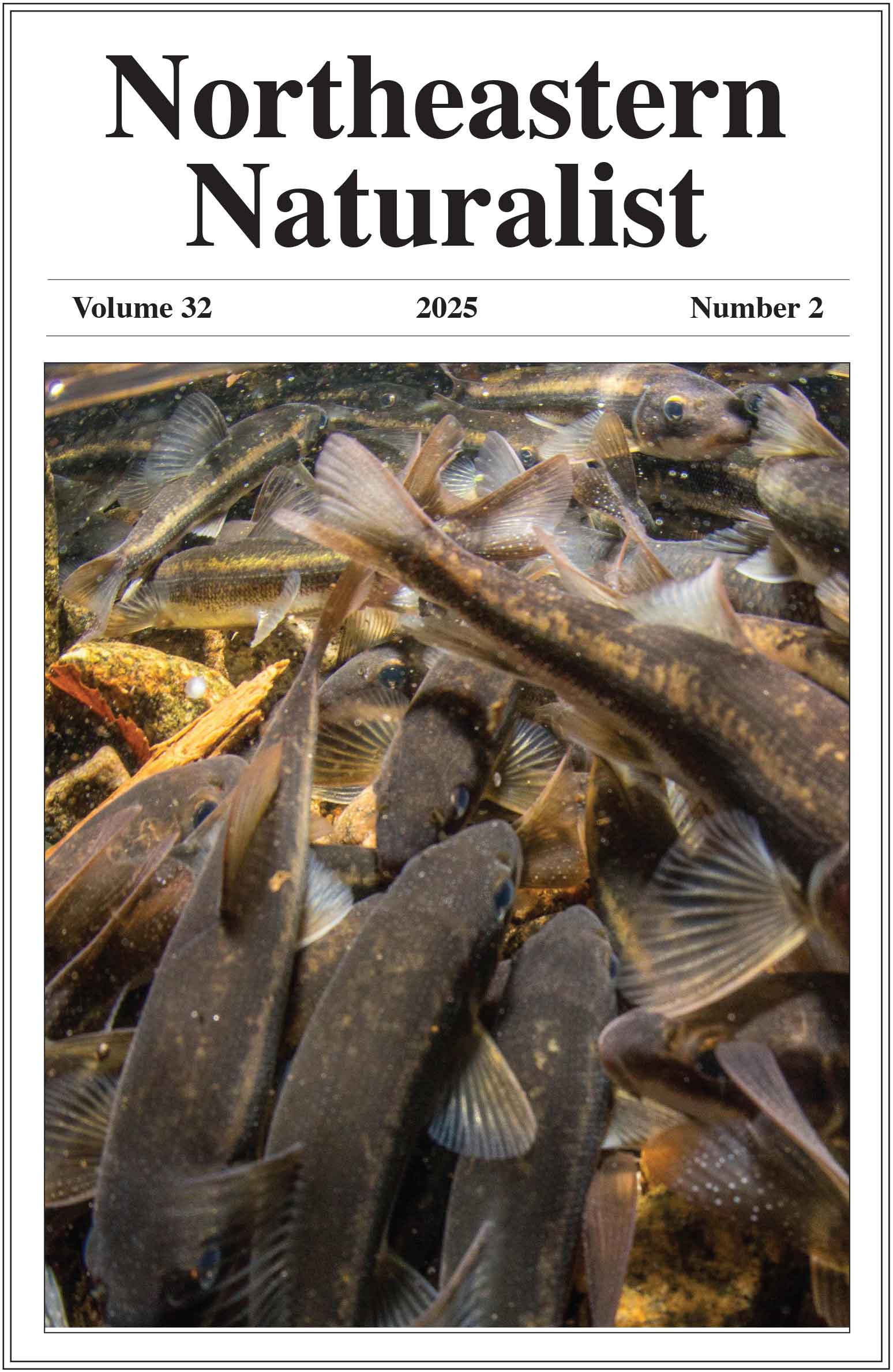Sink or Swim: Mortality Rates of Small Mammals from Two Swimming Pools in Virginia and Pennsylvania
Neal Woodman1,* and Bruce B. Collette2
1148 Fleetwood Terrace, Silver Spring, MD 20910. 2Department of Vertebrate Zoology, Smithsonian Institution, PO Box 37012, MRC 159, Washington, DC 20013-7012. *Corresponding author.
Northeastern Naturalist, Volume 32, Issue 2 (2025): N33–N38
First published early online: 13 June 2025
Abstract
Drownings of animals in swimming pools is occasionally alluded to in the conservation literature as a source of wildlife mortality, yet the kinds and numbers of taxa involved and annual rates of mortality remain poorly documented. We investigated rates of mortality of small mammals in 2 in-ground swimming pools in Bucks County, PA, and Fauquier County, VA, for which we possess more than 2 decades of data. The 2 pools collected a total of 187 individuals of 10 species of mammals. For the Pennsylvania pool, the mean mortality rate was 6 individuals per year (min–max = 0–14). The most numerous species there was Blarina brevicauda (Northern Short-tailed Shrew), representing 40% of individuals. In the Virginia pool, mean mortality was 2 individuals per year (min–max = 0–9), and Cryptotis parvus (Least Shrew) was the most numerous species, accounting for 38% of drownings. Although mortality in individual pools appears to be low compared to other anthropogenic threats, systematic investigation of possible mitigation strategies, including reduction of poolside vegetation and providing floating platforms and means by which small mammals and other fauna can escape from pools, is warranted.
![]() Download Full-text pdf (Accessible only to subscribers. To subscribe click here.)
Download Full-text pdf (Accessible only to subscribers. To subscribe click here.)
Access Journal Content
Open access browsing of table of contents and abstract pages. Full text pdfs available for download for subscribers.
Issue-in-Progress: Vol. 32 (3) ... early view
Check out NENA's latest monograph and Special Issue:













 The Northeastern Naturalist is a peer-reviewed journal that covers all aspects of natural history within northeastern North America. We welcome research articles, summary review papers, and observational notes.
The Northeastern Naturalist is a peer-reviewed journal that covers all aspects of natural history within northeastern North America. We welcome research articles, summary review papers, and observational notes.